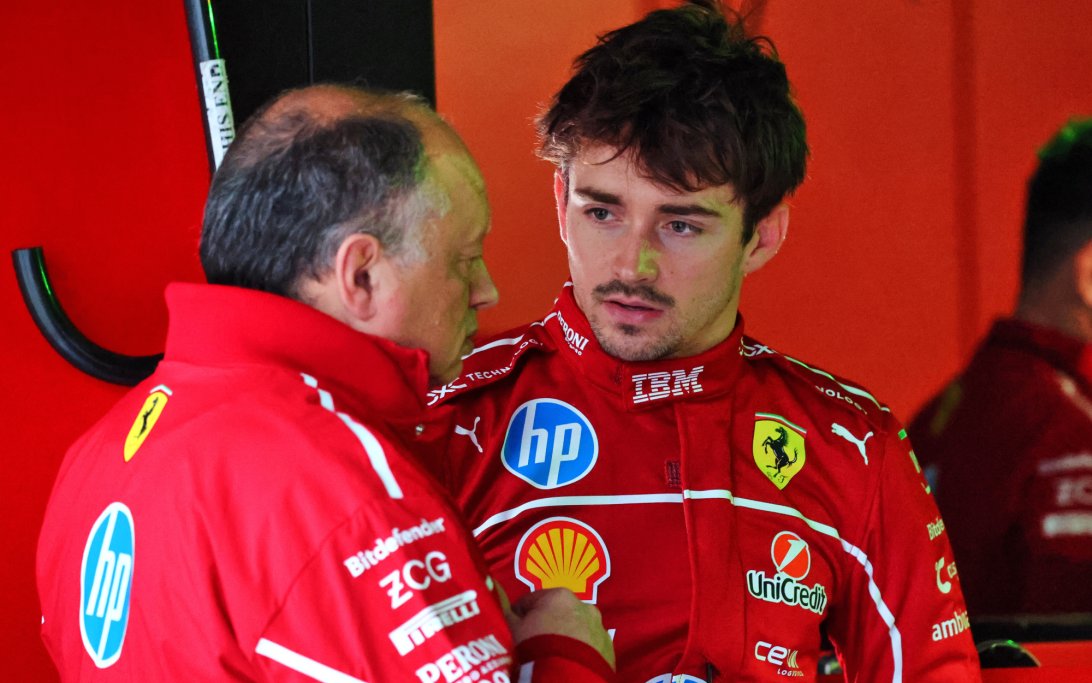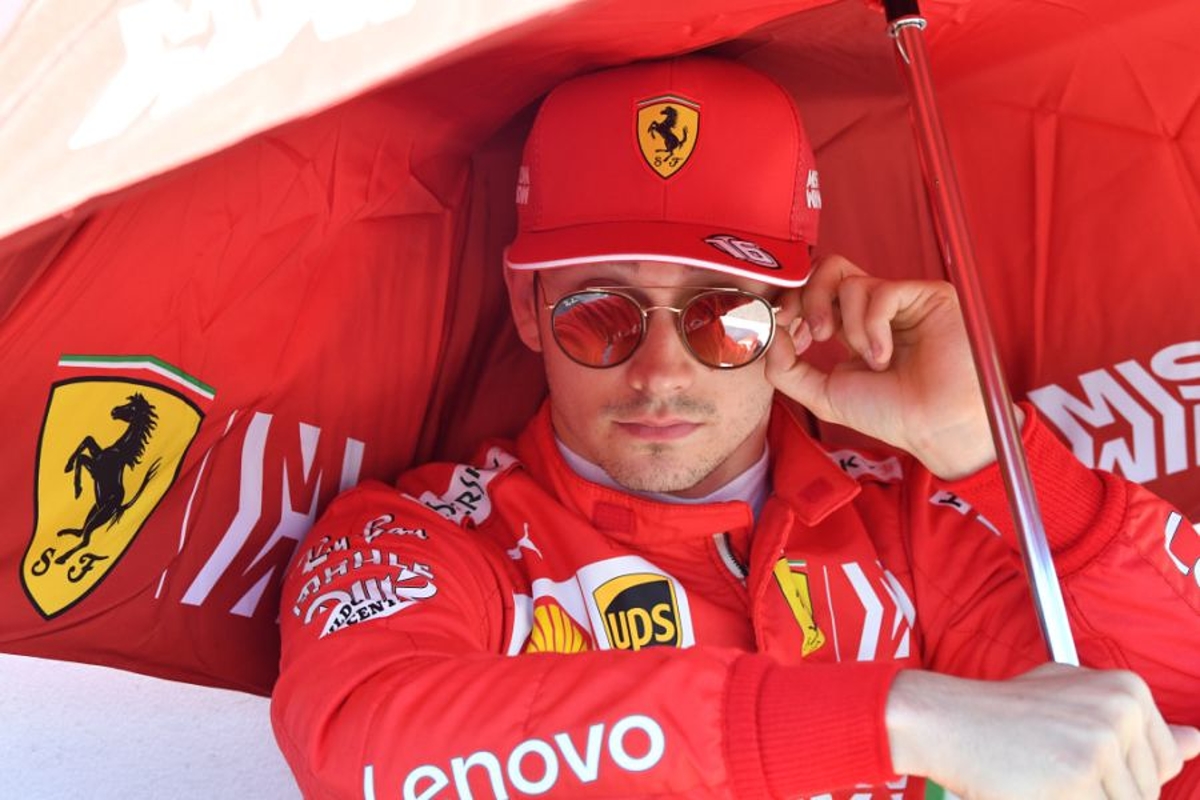The world of Formula 1, a circus built on speed, precision, and relentless ambition, paused this week for a sobering moment of humanity.
Amid the cutthroat business of contracts, car development, and championship mathematics, the heartbreaking news of Lewis Hamilton’s dog, Roscoe, passing away introduced a deep emotional undercurrent to the paddock. Hamilton, who described the decision to say goodbye as “the hardest decision of my life” after Roscoe fought for four days on life support, shared the raw, universal grief of losing a best friend.
Roscoe, an English bulldog, was more than just a pet; he was a fixture of the paddock for years, an angel, and a true companion who died in Hamilton’s arms. This shared moment of profound sorrow offered a brief, necessary contrast to the professional turmoil dominating the sport’s front pages.
Because while one star driver mourns a personal loss, another is staring down a professional abyss, pushing the legendary Scuderia Ferrari toward an existential crisis.
The Meltdown in Maranello: Leclerc’s Fading Confidence
The headline news, shattering the fragile peace of the off-week, revolves around Charles Leclerc. Whispers have exploded into concrete reports: the Monegasque superstar is actively exploring options outside of Maranello, a bombshell revelation that confirms the internal crisis tearing at the heart of the world’s most iconic racing team.
The reports are not vague conjecture. Leclerc’s management team has already initiated discussions with multiple other top-tier Formula 1 teams in anticipation of an exit strategy. The reason is as stark as it is brutal: Leclerc’s confidence in the Ferrari program has “diminished substantially in recent months and frankly years at this point.”
For Leclerc, the situation has become a test of faith versus professional necessity. He has always spoken publicly about his desire to win the World Championship with Ferrari. Yet, as a professional athlete in F1, the ultimate goal is not to love the badge, but “to win.” After seven seasons rowing like a madman in Marinello while watching others arrive and claim victory, his deep-seated love for the team is now being held hostage by its inability to deliver a championship-winning machine.
The current season has served as a final, crushing blow. The car, following a string of recent disappointments, has been dubbed “the worst of any they’ve created over the last few years.” The team took a massive risk with the car’s design philosophy, and that risk has “backfired pretty spectacularly.” Coming off a promising campaign last year where the Tifosi held hope, the failure to deliver in a critical season has tipped Leclerc’s calculus towards self-preservation.
The Critical 2026 Ultimatum and Secret Meetings
The immediate trigger for Leclerc’s management—led by Nicholas Todt—is the radical regulatory overhaul slated for 2026. This monumental change in car design and engine architecture creates an “unknown quantity for everyone.” Any move before the new rules are established is illogical, as there is a genuine risk of “falling from the frying pan into the fire.”
However, the risk of staying at Ferrari if they mess up the 2026 car is far greater for Leclerc’s long-term legacy. The pressure is immense: 2026 is a “critical year for Ferrari” and, by extension, a mission-critical year for Leclerc, who, unlike his future teammate Lewis Hamilton, has not yet won a World Championship.
In a move that confirms the seriousness of the situation, Nicholas Todt has begun “sounding out three teams”—the three most attractive destinations one would expect, excluding a currently Max Verstappen-dominated Red Bull, which is unattractive whether they are successful or failing.
The meetings themselves are the defining piece of evidence for the growing crisis:
McLaren: Todt met with McLaren management, including Team Principal Andrea Stella, at the Italian Grand Prix in Monza. This is a particularly sensitive discussion given the established, successful, but perhaps subtly competitive partnership between Lando Norris and Oscar Piastri.
Aston Martin: Discussions were also held with Lawrence Stroll, the ambitious owner of Aston Martin, a team aggressively investing in talent and infrastructure.
Mercedes: Todt also met with Toto Wolff in Capri, the German team boss who is facing a potential long-term vacancy after Hamilton’s departure to Ferrari.
These meetings, occurring months before the 2026 cars even hit the track, signal that if Ferrari fails to deliver a contender that year, Leclerc will be ready to execute an escape clause as early as 2027.

The Decades-Old Monster: Ferrari’s Bureaucracy
Leclerc’s frustration is not merely about pace; it’s about power and process. The crisis stems from the decades-old problem that has strangled Ferrari’s championship dreams: its infamous bureaucracy.
At many successful teams like Red Bull or Aston Martin, decisions are made swiftly. If a technical leader like Adrian Newey wants a new hire, the owner signs the check. At Ferrari, however, the structure has historically been described as a “horizontal command line,” where decisions are passed through multiple layers, creating a slow, political, and inefficient system. This has consistently cost the team opportunities to respond to rivals and develop their car effectively.
Team Principal Frédéric Vasseur, whom Hamilton specifically wanted to stay on board, is attempting to be the cure. Reports indicate that Vasseur’s command is now “much stronger than it has been previously,” and the horizontal command line is reportedly being eliminated. Vasseur is set to have the power to make key decisions. This restructuring is a necessary, albeit late, measure to create the streamlined, focused environment a champion driver requires.
Yet, as the analysis warns, the elimination of bureaucracy doesn’t guarantee success. If Ferrari doesn’t deliver next year, not only Vasseur, but Hamilton and Leclerc will also face questions about their long-term roles. Leclerc, the younger star with his career zenith still ahead, faces the most critical choice.

The Domino Effect: Aston Martin, McLaren, and the F1 Carousel
A potential Leclerc exit would trigger the most volatile driver market domino effect in years, impacting nearly every top team on the grid.
Aston Martin: The Ultimate Temptation
Lawrence Stroll’s Aston Martin project is arguably the most attractive alternative right now. The team is pulling out all the stops: they have hired high-profile names, including former Red Bull strategist Nick Roberts, complementing the influential arrival of Adrian Newey. This aggressive acquisition strategy—where Stroll is willing to pay top dollar to secure talent—makes the team a major pull factor for any top driver.
This ties directly into the future of two-time champion Fernando Alonso. Alonso has been open that he cannot continue forever and intends to retire after the 2026 season if he can finish “on a positive note,” ideally winning a third title or at least having a very competitive year. Crucially, Alonso stated that if the 2026 car is bad, he would be tempted to stay another year to retire on a high. Should the new regulations propel the Newey-designed Aston Martin to contender status, Alonso’s retirement could open a golden seat, prompting a desperate scramble among Leclerc, Max Verstappen, and others.
McLaren: The Piastri Factor
The visit to McLaren is fascinating. The team has two established young stars, Norris and Piastri. While Norris is well-protected by CEO Zak Brown, Piastri is managed by Mark Webber. The analysis suggests that while Piastri has been told to “stay at McLaren” for his development, a scenario where Piastri leaves to join Ferrari—perhaps in a direct swap if Leclerc moves elsewhere—is not an impossibility. Leclerc, in turn, could become an option at Woking if the current dynamic falters. By the end of this season, Norris will be McLaren’s most experienced driver by Grand Prix starts in the team’s history. Yet, if the internal rivalry becomes unsustainable, or if one of the drivers looks elsewhere, a seat could open in 2027, making Todt’s early discussions entirely logical.
Mercedes: The Verstappen Question
The Mercedes talks are more complex. While Toto Wolff would undoubtedly love to secure a star of Leclerc’s calibre, the priority for the team boss if Ferrari and perhaps Red Bull fail to deliver a competitive car in 2026 is believed to be Max Verstappen. Therefore, Leclerc’s path to the Brackley team may be more limited, dependent entirely on Verstappen’s availability and Mercedes’ own success in the new regulation era.
The stakes are enormous. Every top team on the grid is now monitoring the situation in Maranello. If Ferrari fails to deliver in 2026, the entire driver market will erupt, fueled by a single driver’s decision to prioritize winning over legacy. For Charles Leclerc, this is not just a career decision; it is a declaration of war against the very bureaucracy that has held his career—and the hopes of a nation—hostage for too long. He loves Ferrari, but he is also prepared for the eventuality that his confidence will be completely and irreparably lost. The clock is ticking, and the deadline is the launch of the 2026 car.
